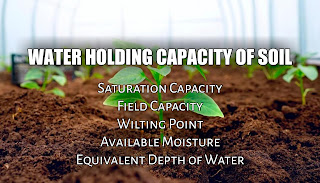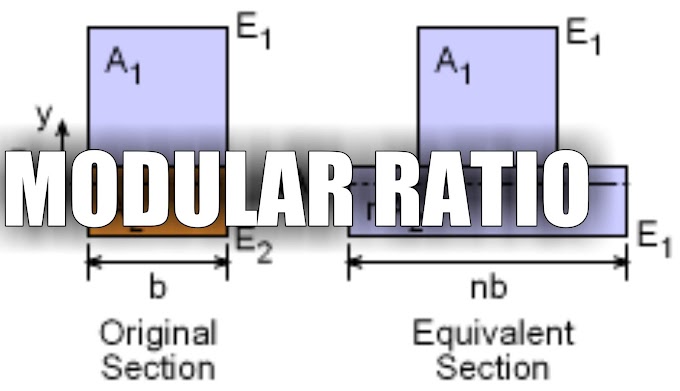To grow plants need water. So, when it comes to cultivation the soil that can hold the maximum amount of water is considered as the best. The loam soil is considered as an ideal soil for irrigation, as they possess good water holding capacity, good drainage, and aeration characteristics. How much water a soil can hold is quantified using the following terms.
Saturation Capacity
Water content of the soil (weight of water/weight of solids) in fully saturated condition (i.e. when all the pores of the soil are filled with water) is called saturation capacity.Field Capacity (FC)
The soil in its natural state can not hold water up to its saturation capacity. Because due to the action of gravity water in pore spaces of soil will try to fall down to the groundwater level. The pores of soil act as a capillary tube and hold some amount of water due to capillary action. The maximum amount of water content that can be held by soil against gravity is called its field capacity. It is the upper limit of capillary water and also the upper limit of the water content available to the plant roots.
Permanent Wilting Point (PWP)
It is the water content in soil when plants become permanently wilted (can be brought back to life with the application of water). The value of PWP is 2% for sand soil, and 30% for clayey soils.
Ultimate Wilting Point (UWP)
It is the water content at which the plant gets completely wilted i.e. die away (can not be brought back to life even with the application of water). It is similar to the hygroscopic coefficient.
Available Moisture
It is the difference in water content of the soil between the field capacity (FC) and the permanent wilting point (PWP). It is also called as storage capacity of the soil.
Readily available moisture
It is that portion of the available moisture, which is most easily extracted by plant roots. About 75% of the available moisture is usually readily available.
Equivalent Depth of Water
For ease in understanding the above-discussed water contents are commonly expressed in terms of equivalent depths.
We know that water content = (Weight of water)/(Weight of solids)
Weight of water = (Equivalent depth of water) x (Area of land) x (Density of water)
Weight of solids = (Depth of root zone) x (Area of land) x (Dry density of soil)
So, water content = [(Equivalent depth of water) x (Density of water)]/[(Depth of root zone) x (Dry density of soil)] = (Equivalent depth of water)/[(Depth of root zone) x (Specific gravity of soil solids)] = (Equivalent depth of water)/(d x S)
Or, Equivalent depth of water = S x d x Water content
By putting water content values of different stages the following formulas can be obtained.
Equivalent Depth of water held by soil at field capacity = S x d x FC
Equivalent Depth of water held by soil at PWP = S x d x PWP
Available water or moisture depth, y = S x d (FC - PWP)
Where S = Specific gravity of soil and d = depth of the root zone
Readily Available Moisture Depth, (dw)
dw = S x d x (Field capacity-Optimum moisture)
The frequency of irrigation is decided by considering evapotranspiration loss (also called consumptive use). If Cu is evapotranspiration loss (depth/time) then the frequency of irrigation,
f= dw/Cu






0 Comments